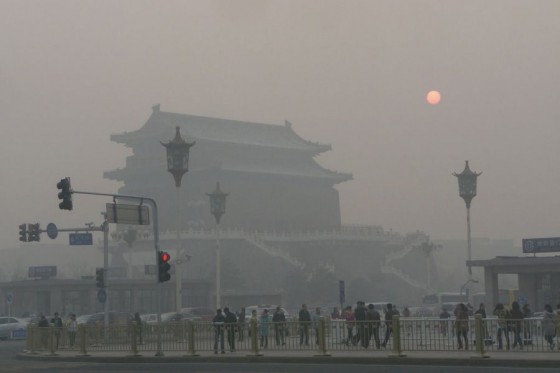Air purification needed
 0 Comment(s)
0 Comment(s) Print
Print E-mail
China Daily, December 8, 2011
E-mail
China Daily, December 8, 2011

When the city struggles to breath while smothered in smog, all Beijingers can do is pray; either for some wind, rain, or snow to clear the air, or if this fails, that their air purifiers and facemasks will be able to protect them from the pollution.
Fortunately their prayers were answered on Wednesday and strong winds cleared the air.
However, this most unwelcome of visitors will all too soon return, as smog is a frequent guest on winter days.
Officials, however, are only slowly to acknowledge this fact and claim that the air pollution has been "moderate" or "hazardous" on only five days this winter.
This is something Beijingers can refute with their own eyes as it is very difficult to see anything but smog on some days.
Beijing residents are rightly concerned about the quality of the air they are breathing and the enthusiasm of officials in their attempts to call every day a blue-sky day.
But simply sticking our heads in the sand so we can't see the sky won't make the problem disappear.
The government needs to be brave enough to face up to problem.
China currently uses PM10, particulate matter with diameter under 10 micrometers, as the measure for air pollution, but Beijing's pollution is mostly caused by fine particles under 2.5 micrometers, so measuring PM2.5 would give a more realistic picture.
However, if China did measure PM2.5, there would be no escaping the reality that the air quality of 80 percent of Chinese cities is shocking.
Yet despite this, a proper indicator of air pollution, such as the amount of PM2.5 in the air, should be adopted, as particles of that size or less in diameter have the most serious long-term health effects.
China does plan to introduce a new standard that includes PM2.5 in 2016.
But the country can't wait that long. More and more people are suffering from the air pollution-induced diseases.
On Tuesday the Ministry of Environmental Protection admitted that most people are in favor of using PM2.5 as a measurement of air quality as soon as possible.
But in truth, action counts more than data. Unfortunately, cleaning up the air is going to be an even bigger challenge than merely telling people how polluted it is.
Dust, coal-fired power plant emissions and motor vehicle emissions are the main sources of PM2.5 particles that the government needs to control.
It is time to stop leaving people's health to the mercy of the weather.






Go to Forum >>0 Comment(s)